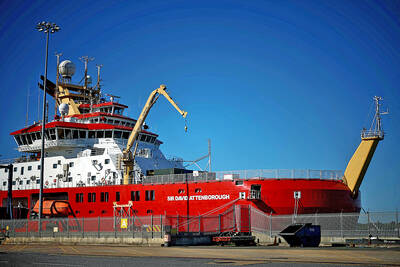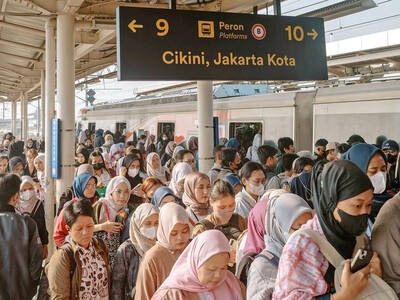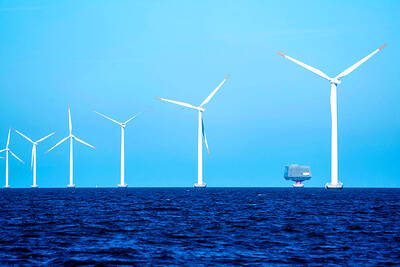The US plans to put "substantially" more ships and warplanes in Asia and the Pacific, even as it pulls troops out of South Korea, a top Pentagon official told Congress on Wednesday.
The build-up of armaments is part of the broadest repositioning of US forces worldwide since the end of the Korean War more than 50 years ago.
In Asia, the moves are intended to boost the US' ability to meet commitments on the Korean Peninsula and elsewhere in the region, despite any permanent cut of troop numbers on the ground, Douglas Feith, under secretary of defense for policy, told the House Armed Services Committee.
"We are not focused on maintaining numbers of troops overseas," Feith said. "Instead, we are focused on increasing the capabilities of our forces and those of our friends."
The Pentagon is concerned about the rapid modernization of China's military and its threat to use force against Taiwan if it moves toward independence.
North Korea's nuclear program is another big US concern.
The military has already announced plans to move about 3,600 US troops from South Korea to Iraq this summer and not replace them. Some South Koreans are also concerned that Washington may pull out of a big part of its 37,000 troops there under the coming realignment.
As part of the repositioning, the US likely will move an aircraft carrier battle group to the Pacific islands of Guam or Hawaii, Ray Dubois, a deputy undersecretary for installations, said after the hearing.
A decision on what port the carrier and its air wing would call home, as well as where they would come from, would be made next year as part of a review of the next round of base closings in the US, Dubois said.
Once the changes are in place, the US "will have increased substantially our naval and air assets in the Asia-Pacific region that increase our abilities to operate effectively ... and fulfill our commitments in the area -- on the Korean Peninsula and elsewhere," Feith testified.
One goal of the shift will be to overcome "the vast distances," he said, but he provided few details. The plans were the subject of consultations in key capitals around the world, he said.
He said the Bush administration envisioned consolidating facilities in Japan and South Korea.
Later this year, a new nuclear-powered attack submarine is to arrive in Guam, the third to make Guam its home port since 2002. The US has spoken to Australia about a combined training facility and possible "pre-positioning" of war-fighting supplies, Feith said.
In other changes, Feith said the Bush administration would invest in new military facilities in southeastern Europe that would be useful for joint training and as a springboard for rapid deployment to the Middle East. He ruled out building full-fledged bases.
In the Middle East, the administration proposed maintaining facilities to be used for emergencies and force rotations.

STEPPING UP: Diminished US polar science presence mean opportunities for the UK and other countries, although China or Russia might also fill that gap, a researcher said The UK’s flagship polar research vessel is to head to Antarctica next week to help advance dozens of climate change-linked science projects, as Western nations spearhead studies there while the US withdraws. The RRS Sir David Attenborough, a state-of-the-art ship named after the renowned British naturalist, would aid research on everything from “hunting underwater tsunamis” to tracking glacier melt and whale populations. Operated by the British Antarctic Survey (BAS), the country’s polar research institute, the 15,000-tonne icebreaker — boasting a helipad, and various laboratories and gadgetry — is pivotal to the UK’s efforts to assess climate change’s impact there. “The saying goes

FRUSTRATIONS: One in seven youths in China and Indonesia are unemployed, and many in the region are stuck in low-productivity jobs, the World Bank said Young people across Asia are struggling to find good jobs, with many stuck in low-productivity work that the World Bank said could strain social stability as frustrations fuel a global wave of youth-led protests. The bank highlighted a persistent gap between younger and more experienced workers across several Asian economies in a regional economic update released yesterday, noting that one in seven young people in China and Indonesia are unemployed. The share of people now vulnerable to falling into poverty is now larger than the middle class in most countries, it said. “The employment rate is generally high, but the young struggle to

ENERGY SHIFT: A report by Ember suggests it is possible for the world to wean off polluting sources of power, such as coal and gas, even as demand for electricity surges Worldwide solar and wind power generation has outpaced electricity demand this year, and for the first time on record, renewable energies combined generated more power than coal, a new analysis said. Global solar generation grew by a record 31 percent in the first half of the year, while wind generation grew 7.7 percent, according to the report by the energy think tank Ember, which was released after midnight yesterday. Solar and wind generation combined grew by more than 400 terawatt hours, which was more than the increase in overall global demand during the same period, it said. The findings suggest it is

TICKING CLOCK: A path to a budget agreement was still possible, the president’s office said, as a debate on reversing an increase of the pension age carries on French President Emmanuel Macron yesterday was racing to find a new prime minister within a two-day deadline after the resignation of outgoing French Prime Minister Sebastien Lecornu tipped the country deeper into political crisis. The presidency late on Wednesday said that Macron would name a new prime minister within 48 hours, indicating that the appointment would come by this evening at the latest. Lecornu told French television in an interview that he expected a new prime minister to be named — rather than early legislative elections or Macron’s resignation — to resolve the crisis. The developments were the latest twists in three tumultuous